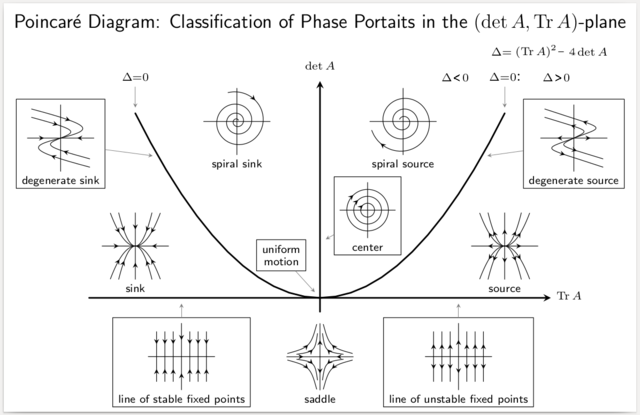Loading AI tools
Constant solution to a differential equation From Wikipedia, the free encyclopedia
In mathematics, specifically in differential equations, an equilibrium point is a constant solution to a differential equation.

The point is an equilibrium point for the differential equation
if for all .
Similarly, the point is an equilibrium point (or fixed point) for the difference equation
if for .
Equilibria can be classified by looking at the signs of the eigenvalues of the linearization of the equations about the equilibria. That is to say, by evaluating the Jacobian matrix at each of the equilibrium points of the system, and then finding the resulting eigenvalues, the equilibria can be categorized. Then the behavior of the system in the neighborhood of each equilibrium point can be qualitatively determined, (or even quantitatively determined, in some instances), by finding the eigenvector(s) associated with each eigenvalue.
An equilibrium point is hyperbolic if none of the eigenvalues have zero real part. If all eigenvalues have negative real parts, the point is stable. If at least one has a positive real part, the point is unstable. If at least one eigenvalue has negative real part and at least one has positive real part, the equilibrium is a saddle point and it is unstable. If all the eigenvalues are real and have the same sign the point is called a node.
Seamless Wikipedia browsing. On steroids.
Every time you click a link to Wikipedia, Wiktionary or Wikiquote in your browser's search results, it will show the modern Wikiwand interface.
Wikiwand extension is a five stars, simple, with minimum permission required to keep your browsing private, safe and transparent.